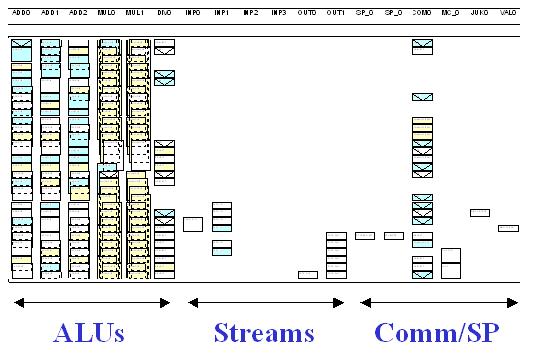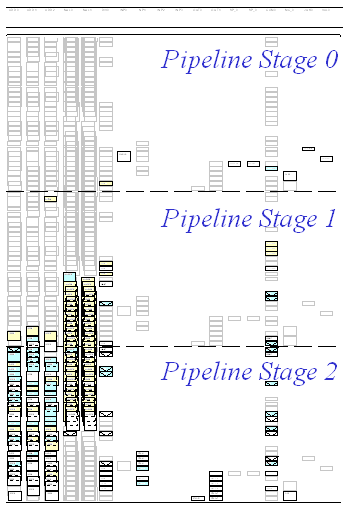Kernel-Level Programming
Imagine kernels are coded in a programming language called KernelC, using the expression syntax of the C language. The code appears to operate on a single record at one time, but the 8 clusters on Imagine each run the same kernel on different elements of the stream simultaneously, in SIMD fashion. Kernels may access local variables, read input streams, and write output streams, but may not make arbitrary memory references. The Kernel Scheduler compiles KernelC code into a microcode program, which is a sequence of VLIW instructions.
This example KernelC kernel interacts with the above StreamC code. It produces two streams, c and d. The first stream is the sum of the two input streams, while the second stream is the difference of the two input streams.
loop(input_stream0) { input_stream0 >> a; input_stream1 >> b; c = a + b; d = a - b; output_stream0 << c; output_stream1 << d; }Imagine repeats the kernel until the input streams (stored in the SRF by the Host Processor) are emptied. Details of the KernelC language syntax is available under section 3 of the ips_user.pdf document.
The following figures show a scheduled kernel. Figure 1 is a single pass through the stereo-depth extraction kernel. It shows all the functional units in Imagine and their respective usage with time in the y-axis. Figure 2 shows the kernel after software pipelining.
Figure 1: One Kernel iteration
Figure 2: Scheduled and Pipelined Kernel

